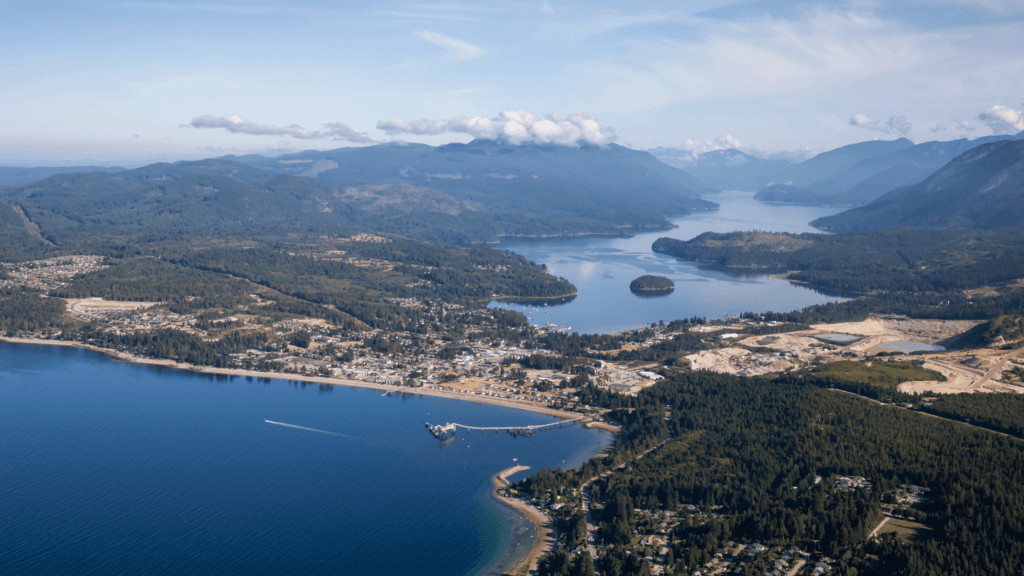The ground shook along BC’s Sunshine Coast, rattling homes and sending a jolt of adrenaline through communities near Sechelt. A 5.1 magnitude earthquake hit the region on February 21, 2025—thankfully, with no reports of severe damage or injuries. But for a province perched on the edge of a major fault line, even a minor quake serves as a reminder of the inevitable: a much bigger one could be coming. While this latest tremor was relatively harmless, it raises an important question—how prepared is BC for a large-scale seismic event? Experts have long warned about “The Big One,” a potentially catastrophic megathrust earthquake expected along the Cascadia Subduction Zone. With infrastructure, emergency plans, and public preparedness on the line, the province faces an ongoing challenge: strengthening its defenses before a disaster strikes.
Quick look
- A 5.1 magnitude earthquake struck near Sechelt, BC, on February 21, 2025, causing no damage but sparking renewed discussions about preparedness for “The Big One.”
- BC sits on the Cascadia Subduction Zone, a fault line capable of producing a catastrophic megathrust earthquake that experts believe is overdue.
- The province has strengthened seismic building codes, launched an early warning system, and promoted public safety drills, but retrofitting older structures remains challenging.
- Residents and businesses are encouraged to secure heavy furniture, prepare emergency kits, and participate in earthquake drills to boost personal and community resilience.
What happened in Sechelt?

Just before dawn on February 21, a 5.1 magnitude earthquake struck off the coast of Sechelt, BC. According to seismologists, the quake originated around 10 kilometers beneath the Earth’s surface. This relatively shallow tremor is why it was widely felt across the Sunshine Coast. Residents reported a sharp jolt followed by a brief rolling sensation, with some describing rattling windows and swaying light fixtures.
Despite the early morning shake-up, emergency officials quickly confirmed there were no reports of injuries or significant structural damage. The BC Emergency Info Service stated that the quake did not trigger a tsunami warning, and local authorities assured residents that critical infrastructure, including roads, bridges, and utilities, remained intact.
For many in the region, the earthquake served as a wake-up call, literally and figuratively. Some took to social media to share their experiences, with posts ranging from mild amusement to genuine concern about what a larger quake could mean. Meanwhile, officials reiterated the importance of earthquake preparedness, urging residents to review their emergency kits and have a safety plan.
What is ‘The Big One’?
Seismologists have warned for years that BC is due for a massive quake. The culprit? The Cascadia Subduction Zone, a fault line stretching from northern Vancouver Island to California, where the Juan de Fuca Plate slowly slides beneath the North American Plate. While this geological process is gradual, it can potentially unleash a catastrophic event known as “The Big One”—a massive megathrust earthquake that experts believe is overdue.
The last significant quake along the CSZ occurred on January 26, 1700, with an estimated magnitude of 8.7 to 9.2. This powerful earthquake caused the coastline to drop several feet, generating a tsunami that reached Japan. Historical records from Japan document an “orphan tsunami” that arrived without any preceding local quake, linking it to the CSZ event.
British Columbia’s coast is particularly vulnerable due to its proximity to this fault line. A megathrust earthquake in this region could result in prolonged ground shaking lasting several minutes, leading to widespread infrastructure damage, landslides, and a devastating tsunami. Communities along the west coast of Vancouver Island would have mere minutes to evacuate before tsunami waves, potentially up to 30 meters (98 feet) high, make landfall.
The potential human and economic toll of such an event is staggering. Understanding the risks associated with the CSZ underscores the urgency for comprehensive preparedness and resilient infrastructure to mitigate the impact when—not if—The Big One strikes.
Is BC prepared?
British Columbia knows the risks of earthquakes, but is it ready for a big one? Over the years, the province has stepped up its preparedness efforts, strengthening infrastructure, updating building codes, and rolling out public education programs. But with an event like a megathrust earthquake, even the best-laid plans will face a real-world test.
Building stronger to withstand shaking
BC has some of Canada’s strictest seismic building codes, designed to make structures more resilient to ground movement. The BC Building Code is regularly updated to reflect new research, with recent changes adding tougher seismic standards for new construction. The goal? To ensure buildings can endure moderate quakes without major damage—and keep standing during a big one. However, while newer structures are built with earthquakes in mind, many older buildings across the province remain vulnerable. Retrofitting efforts are ongoing, but they’re costly and take time.
Early warnings and emergency plans
One of BC’s newest defenses against earthquakes is the Canadian Earthquake Early Warning system, launched in 2024. This network of sensors detects initial seismic waves and sends alerts before the shaking starts—giving people precious seconds to drop, cover, and hold on. These alerts are now integrated into Canada’s National Public Alerting System, so people with mobile devices or access to emergency broadcasts can get a heads-up before the worst of a quake hits.
The province also invests heavily in public education. The Great British Columbia ShakeOut is an annual drill that encourages people to practice earthquake safety. PreparedBC, the province’s emergency preparedness program, provides guides on creating earthquake plans, building emergency kits, and securing homes against seismic shaking. The message is clear: personal preparedness could make all the difference when The Big One hits.
How BC is strengthening its earthquake readiness
On paper, BC has a strong earthquake preparedness strategy. Buildings are getting stronger, warning systems are in place, and emergency drills are routine. However, the reality is that no amount of preparation can entirely eliminate the risks of an earthquake with a magnitude of 9.0.
That’s why British Columbia is taking significant steps to bolster its defenses against potential major earthquakes. From Vancouver’s proactive strategies to province-wide advancements in building standards and early warning systems, here’s how BC is gearing up for seismic events.
The University of British Columbia (UBC) has initiated programs like Earthquake Day in collaboration with the City of Vancouver and the Vancouver Public Library. This event brings together researchers, professionals, and the public to discuss earthquake preparedness, raise awareness, and foster a culture of readiness, collaboration, and public engagement.
Enhancing building resilience
Considering seismic risks, BC has updated its building codes to ensure new constructions can withstand significant ground shaking. The 2024 BC Building Code, effective March 10, 2025, introduces stricter seismic design requirements. These updates focus on bracing requirements for lateral loads from wind and earthquakes, reflecting the province’s high seismic hazard values. Builders and designers are encouraged to familiarize themselves with these changes to enhance structural resilience.
Seismic retrofitting is a priority for existing structures, especially older buildings and schools. The province has developed performance-based methodologies to assess and upgrade these buildings, ensuring they meet current safety standards. These retrofitting efforts aim to provide cost-effective solutions to enhance the safety of at-risk structures.
Implementing early warning systems
A crucial component of BC’s earthquake preparedness is the implementation of early warning systems. In August 2024, Natural Resources Canada launched the Canadian Earthquake Early Warning (EEW) system in British Columbia. This system detects initial seismic waves and provides alerts through the National Public Alerting System, offering valuable seconds for individuals and organizations to take protective actions before stronger shaking occurs.
In addition, local innovations like ShakeAlarm, an on-site early warning system developed in Vancouver, have been deployed to protect critical infrastructure. For instance, since 2009, ShakeAlarm has been safeguarding the George Massey Tunnel by automatically initiating protective measures upon detecting seismic activity.
Through these comprehensive efforts—community engagement, stringent building codes, retrofitting initiatives, and advanced warning systems—BC is actively enhancing its earthquake readiness to protect its residents and infrastructure from future seismic events.
Bottom line
The February 21 quake might not have been The Big One, but it is a reminder that BC sits on the edge of one of the most seismically active zones in the world. Today’s steps—updating infrastructure, reinforcing emergency plans, or simply educating ourselves—will determine how well we withstand the inevitable.
Staying prepared means staying informed. Subscribe to our newsletter and follow us on social media for the latest updates on earthquake safety, industry insights, and practical tips to protect you and your community.




2 comments